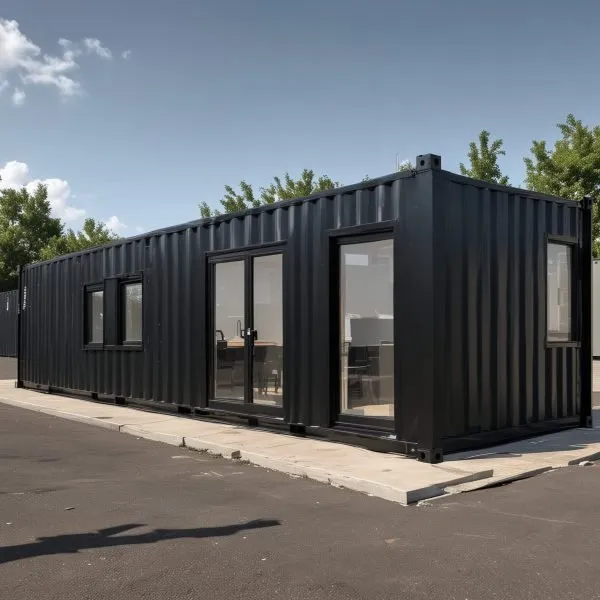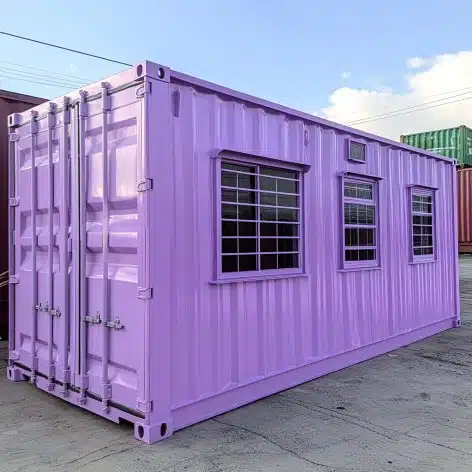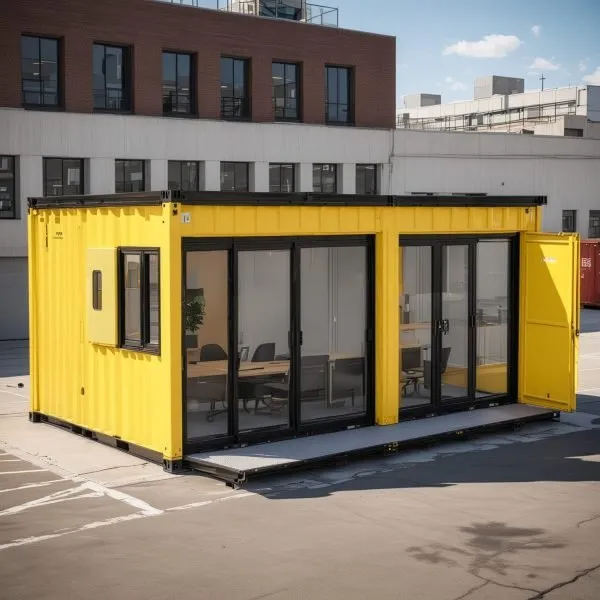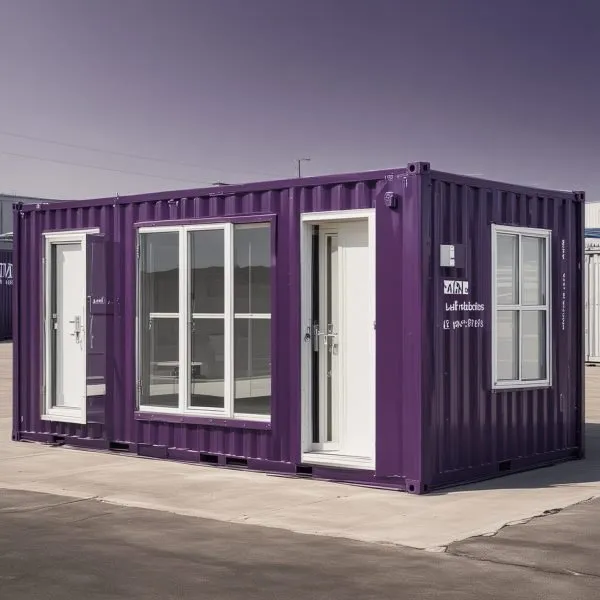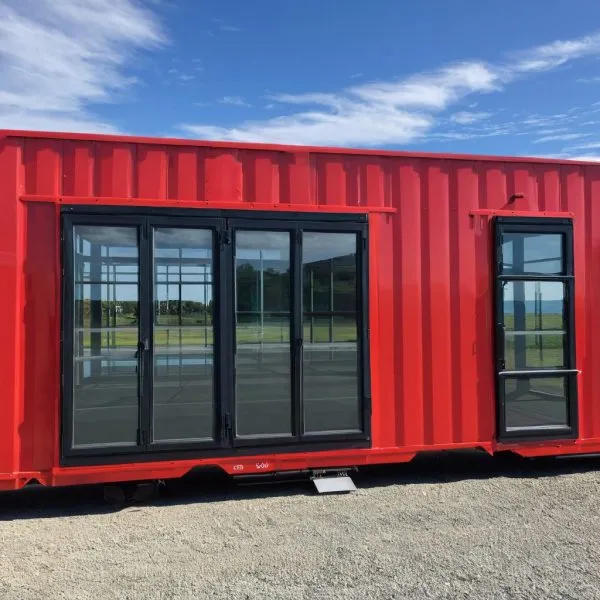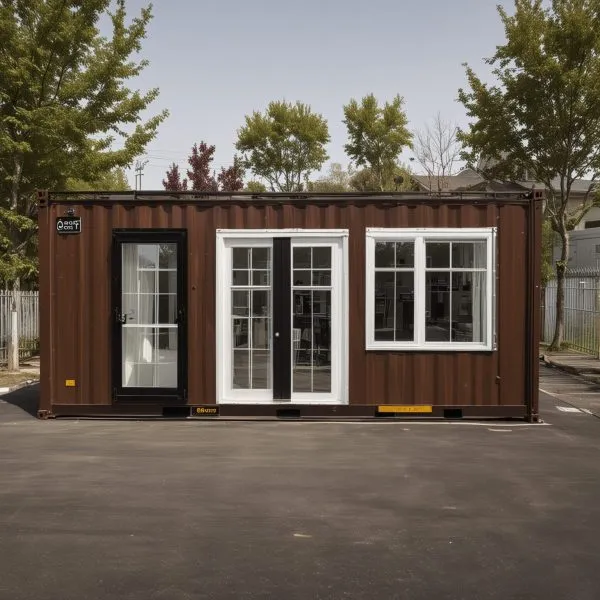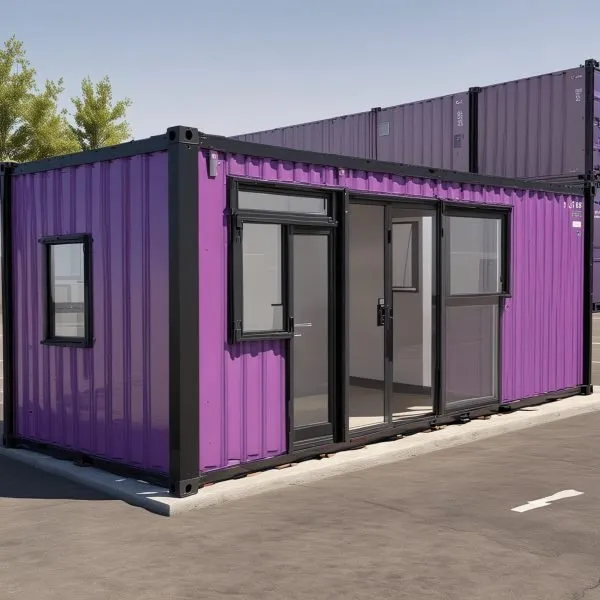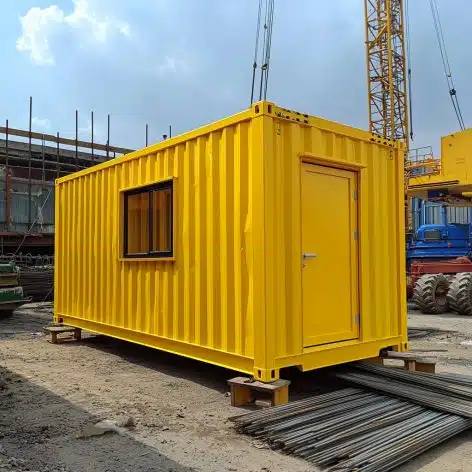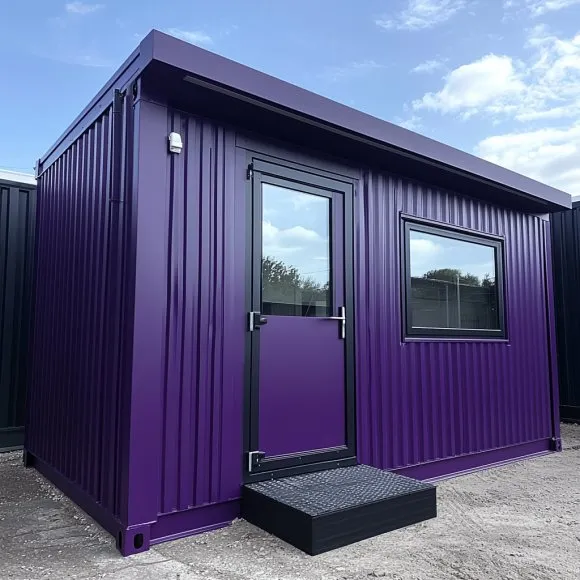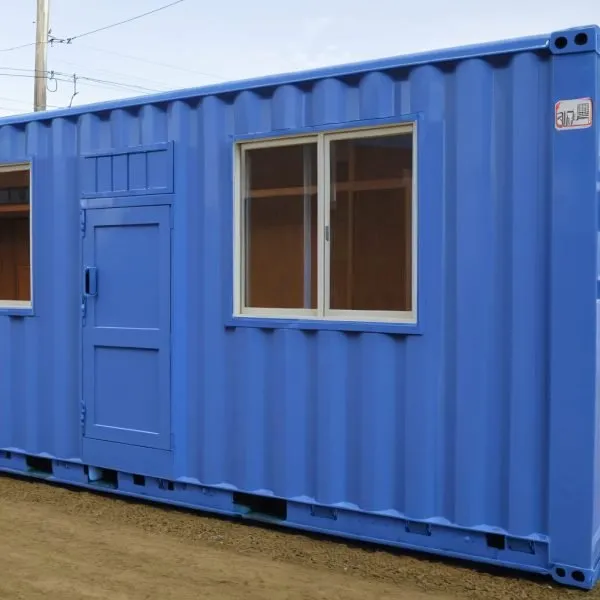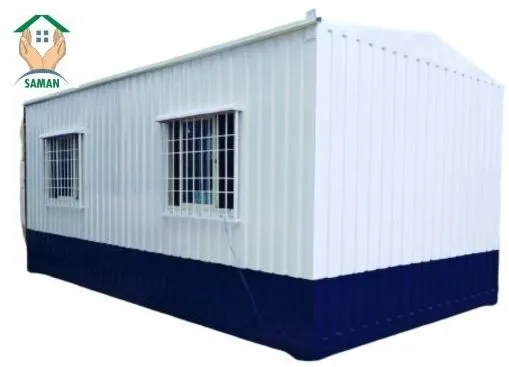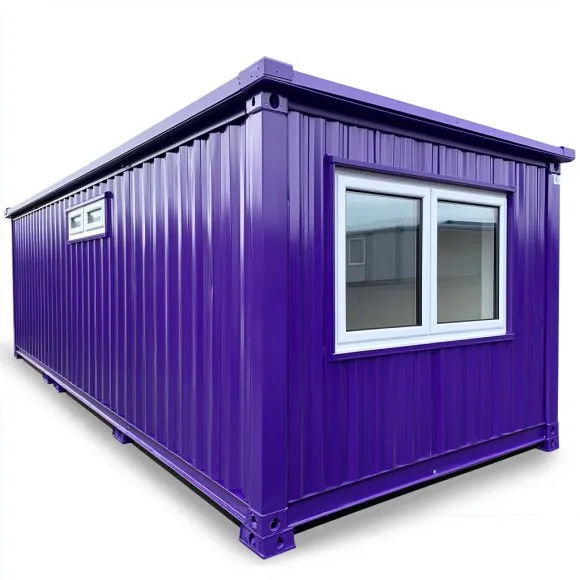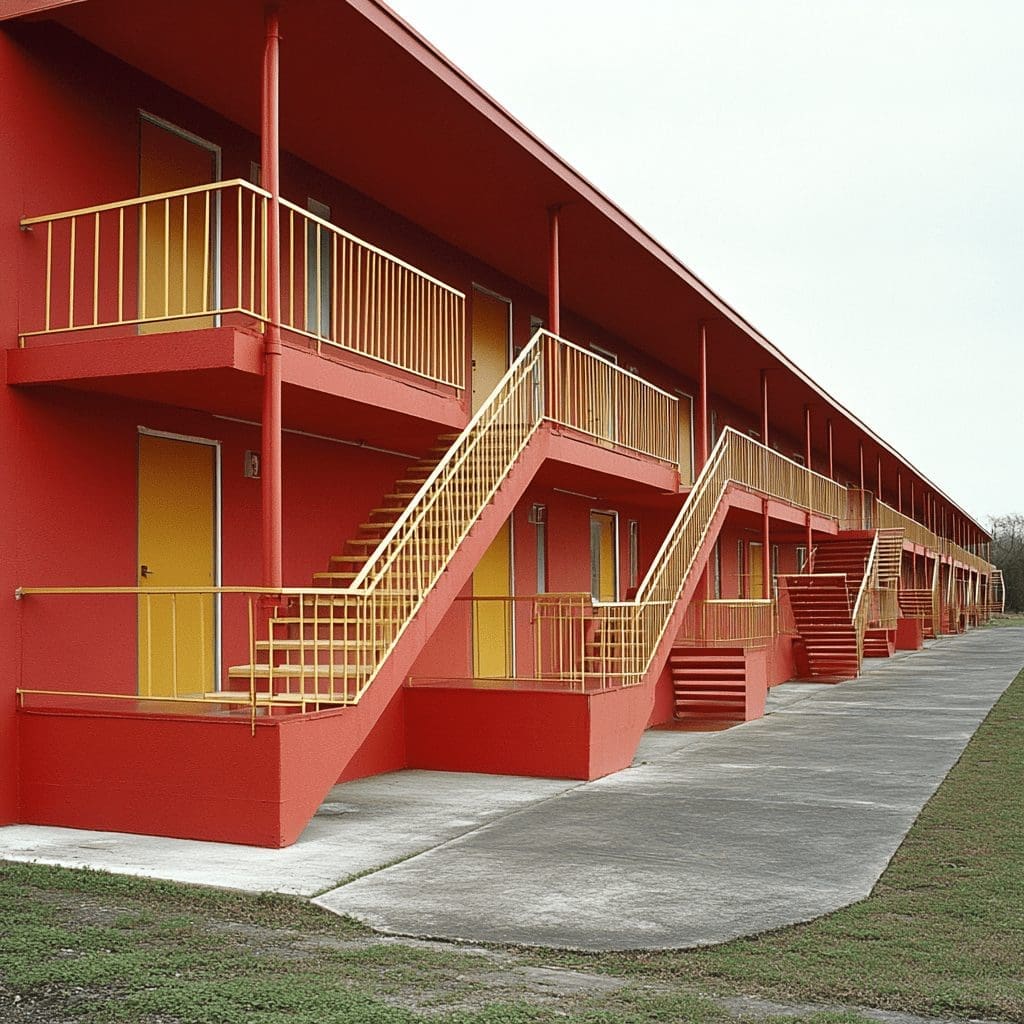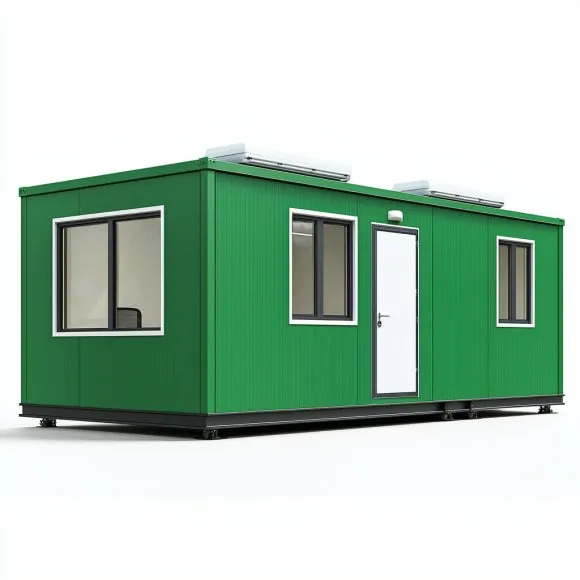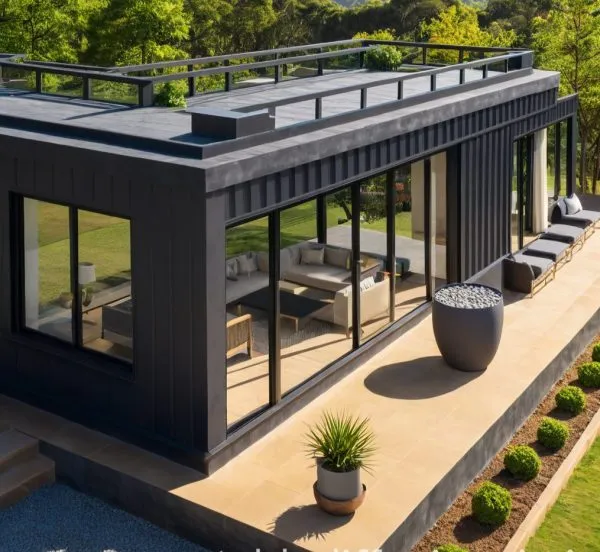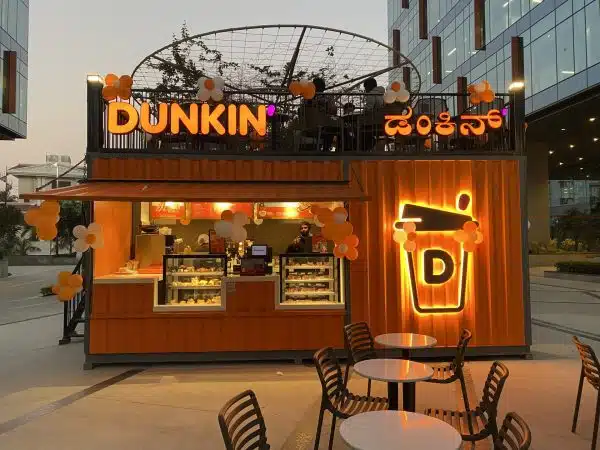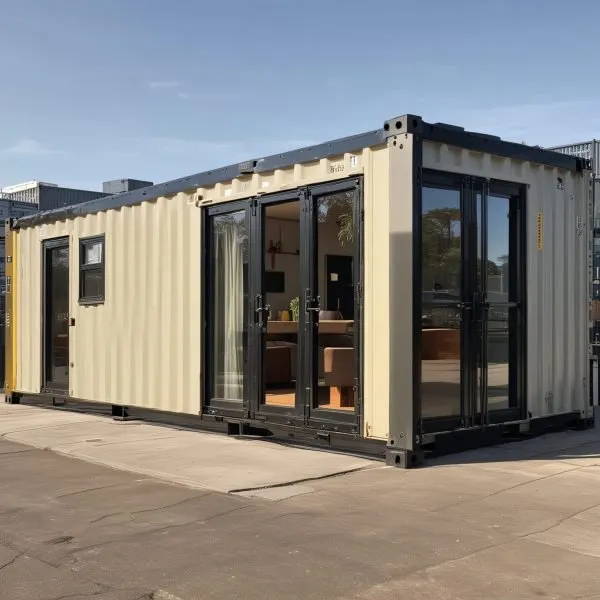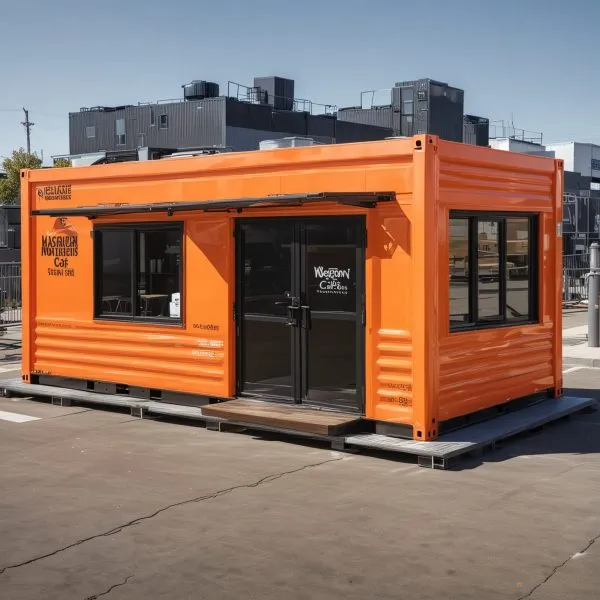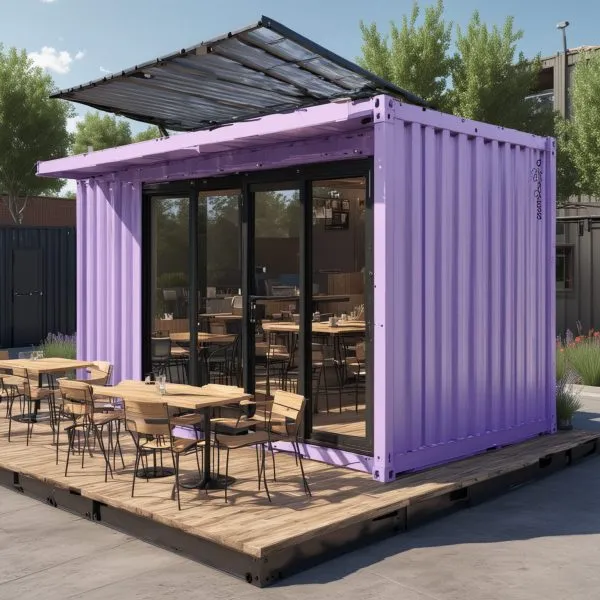Tiny Wood Cabins: Exploring Tiny House Log Cabin Styles and More

Introduction to Tiny Wood Cabins
Tiny wood cabins have become a popular choice for individuals seeking an affordable, sustainable, and comfortable living or working space. Whether you’re looking for a cozy weekend retreat, a portable office, or a permanent home, tiny wood cabins offer a versatile solution. Their charm lies in their simplicity, eco-friendly design, and ability to be customized to fit different needs. In this blog, we will explore the different types of tiny wood cabins, including tiny house log cabin styles, little log homes, portable cottages, and portable small cabins. These cabins provide the perfect blend of practicality and comfort, making them ideal for various uses.
Why Choose Tiny Wood Cabins?
Tiny wood cabins are not only aesthetically pleasing but also highly functional. They provide a perfect alternative to traditional, larger homes, offering a compact, efficient space without compromising on comfort. The appeal of tiny wood cabins lies in their ability to maximize the use of space while maintaining a rustic, cozy feel. Whether you’re interested in a small, portable cabin for a guesthouse, or a more permanent tiny house log cabin style, these cabins are an excellent option for a variety of uses.
One of the main reasons people opt for tiny wood cabins is the environmental benefits. Made primarily from wood, these cabins are often more energy-efficient than larger homes, requiring fewer materials to build and maintain. The use of sustainable materials also ensures that tiny wood cabins leave a smaller carbon footprint compared to traditional construction methods.
Tiny wood cabins are also known for their affordability. Compared to traditional homes, they are much more cost-effective in terms of both construction and maintenance. The smaller size means lower heating and cooling costs, as well as reduced maintenance and cleaning time. Whether you are interested in a little log home or a portable cabin on wheels, tiny wood cabins provide an excellent investment that offers great value over time.
Tiny House Log Cabin Style: A Rustic Retreat
The tiny house log cabin style is one of the most sought-after designs for those looking for a rustic and charming living space. Inspired by traditional log cabins, this style combines the beauty of wood with the efficiency of a small, practical living area. The appeal of a tiny house log cabin style lies in its warm, welcoming atmosphere and the connection it fosters with nature.
Log cabins have been around for centuries, and their timeless charm continues to captivate modern-day homebuyers. This style of cabin emphasizes natural wood construction, often with exposed beams and wooden interiors that provide a cozy, earthy vibe. Tiny house log cabins are perfect for those who want to live in a small, energy-efficient space without sacrificing the beauty of traditional architecture. Portable log cabins can be customized with modern amenities, ensuring that you have everything you need in a small but functional space.
The Benefits of Living in a Tiny Wood Cabin
Living in a tiny wood cabin offers several benefits that make it an attractive choice for many. First, these cabins are highly adaptable, allowing you to create a space that fits your personal style and needs. From small log homes to portable cottages, you can design a tiny wood cabin to be your ideal living space, whether it’s a vacation retreat or a full-time home.
Additionally, tiny wood cabins are typically built with sustainable, eco-friendly materials, making them a good choice for those who want to reduce their environmental impact. The smaller footprint of a tiny wood cabin means fewer resources are needed to construct it, and the reduced space means less energy is required to heat or cool it.
For those looking to minimize their lifestyle and reduce clutter, tiny wood cabins are an ideal option. With efficient layouts and clever storage solutions, tiny wood cabins maximize the use of every square foot of space. Whether you choose a portable cabin or a more permanent little log home, these cabins offer a simple and sustainable way of living.
Conclusion
Tiny wood cabins offer a perfect blend of functionality, style, and sustainability. From the classic charm of tiny house log cabin styles to the convenience of portable small cabins, these structures provide an affordable and practical solution for a variety of needs. Whether you’re looking for a weekend getaway, a mobile office, or a full-time home, tiny wood cabins can be customized to fit your lifestyle. With their environmental benefits, cost-effectiveness, and aesthetic appeal, tiny wood cabins are a smart investment for anyone looking to simplify their living space without compromising on comfort.
For more information on how to choose the perfect tiny wood cabin, visit our About Us page.
The Advantages of Living in a Little Log Home

Living in a little log home offers many benefits, from its charming rustic aesthetic to its practical, eco-friendly features. Tiny wood cabins, including little log homes, provide a cozy and sustainable living solution that’s perfect for those looking to downsize or embrace minimalist living. In this section, we will explore the top advantages of living in a little log home, highlighting its energy efficiency, affordability, and the sense of comfort it provides.
Sustainable and Eco-Friendly Living
One of the major advantages of living in a little log home is the environmental impact. Log cabins, especially those made from sustainable wood, offer a green alternative to traditional housing. Wood is a natural, renewable resource that, when harvested responsibly, has a minimal environmental impact. Additionally, small log homes are inherently energy-efficient, requiring less energy to heat and cool than larger homes.
- Natural Insulation: Wood is a natural insulator, keeping the interior of your little log home warm in winter and cool in summer. This reduces the need for artificial heating and cooling, lowering energy bills and contributing to a greener, more sustainable lifestyle.
- Eco-Friendly Materials: Many tiny wood cabins are built using eco-friendly materials such as reclaimed wood or non-toxic finishes, further reducing their environmental footprint. Opting for a tiny log home allows you to live in harmony with nature while minimizing waste.
Cost-Effective and Affordable Housing
Compared to traditional homes, little log homes are much more affordable to build and maintain. The smaller size of these homes means lower upfront construction costs and less land needed. Tiny log cabins are particularly appealing to individuals or families looking to downsize and reduce their living expenses.
- Lower Construction Costs: Building a little log home is often more cost-effective than constructing a larger, conventional house. With less material required and simpler foundations, tiny log cabins are an affordable option for those on a budget.
- Reduced Maintenance: Due to their compact size and durable construction, log homes require less maintenance than traditional houses. Additionally, the low energy demands reduce monthly utility costs, making little log homes an affordable long-term housing option.
Cozy and Comfortable Living Space
Despite their small size, little log homes provide a cozy and comfortable living environment. The natural warmth of wood and the compact design create a welcoming atmosphere that is perfect for individuals or small families. Tiny log homes are often designed with open floor plans that maximize the available space, providing a functional layout that’s both comfortable and efficient.
- Efficient Use of Space: Log homes are known for their ability to make the most of limited space. Clever design features, such as multi-purpose furniture and open floor plans, ensure that every square foot of your little log home is used effectively.
- Warm and Inviting Atmosphere: The natural wood interiors create a warm and inviting atmosphere, making it a peaceful and relaxing environment to live in. Many people find that living in a log home brings a sense of tranquility and connection to nature.
Customization Options for Your Little Log Home
Little log homes can be highly customizable, allowing you to create a space that fits your specific needs and preferences. Whether you want a small, simple retreat or a more luxurious living space, you can choose from a variety of materials, layouts, and finishes to design your ideal cabin.
- Layout and Design: From open-plan studios to multi-room homes, little log cabins can be customized to fit your lifestyle. Whether you’re using it as a vacation home or a full-time residence, you can design the perfect layout for your needs.
- Interior Features: Customizing the interior of your log home allows you to incorporate features such as a wood stove, built-in shelving, or a large kitchen to create a space that suits your tastes and needs.
Ideal for a Minimalist Lifestyle
Living in a little log home encourages a minimalist lifestyle by forcing you to prioritize what’s truly important. With less space to manage, homeowners can focus on quality over quantity when it comes to possessions. This makes little log homes ideal for individuals or couples who want to simplify their lives and reduce clutter.
- Simplified Living: Downsizing to a small log home offers a simpler way of life, allowing you to focus on experiences rather than material possessions. A tiny log home encourages you to live with less, which can lead to greater happiness and financial freedom.
- Stress-Free Maintenance: The smaller space of a little log home means less cleaning and maintenance, giving you more time to enjoy the things you love. You can spend less time maintaining your home and more time enjoying nature, traveling, or pursuing your hobbies.
A Beautiful, Timeless Aesthetic
Little log homes offer a classic aesthetic that never goes out of style. The natural wood materials, rustic finishes, and charming designs make these homes timeless, evoking feelings of warmth and comfort. Whether placed in the woods, on a lakeside, or in a suburban backyard, little log homes have a unique beauty that adds value to any location.
- Rustic Charm: The traditional log cabin look is beloved for its rustic charm and connection to nature. Whether you opt for a portable cottage or a little log home, the timeless appeal of log construction makes these homes as beautiful as they are functional.
- Blend with Nature: Log homes naturally blend with their surroundings, creating a harmonious environment that feels like a part of the landscape. The natural wood exterior and warm interiors make these homes an ideal choice for those who love the outdoors.
Conclusion
Living in a little log home offers numerous benefits, including sustainability, affordability, comfort, and customization. These homes provide an eco-friendly alternative to traditional housing while maintaining a high level of comfort and practicality. Whether you’re interested in a full-time residence or a vacation retreat, a little log home can provide the perfect solution for a simpler, more sustainable lifestyle. If you’re interested in learning more about our portable cabins and tiny wood cabins, visit our About Us page for more details.
Portable Cottage: The Flexibility of Mobile Living
A portable cottage offers a unique combination of mobility and comfort, making it an ideal solution for those seeking a flexible living or working space. Whether you need a temporary home, a mobile office, or a guesthouse, portable cottages provide all the benefits of traditional homes but with the added flexibility to move and adapt to various environments. In this section, we explore the features, benefits, and various uses of portable cottages, and why they are becoming increasingly popular for modern living.
What Is a Portable Cottage?
A portable cottage is a compact, self-contained living space mounted on wheels or a movable base. These cottages are designed for easy relocation, allowing you to move your home or workspace whenever necessary. Whether you’re looking for a tiny log cabin-style portable cottage or a modern, minimalist design, these units offer a versatile and convenient solution. They can be used as temporary accommodation for guests, a mobile office for remote work, or a retreat for those who prefer to live on the move.
Unlike traditional homes that are fixed to one location, portable cottages offer the flexibility of mobility, making them a great choice for people who need temporary housing or workspaces. Portable cabins and cottages are perfect for people who want the freedom to relocate their space without dealing with the hassle of building permanent structures.
Benefits of Portable Cottages
The main appeal of portable cottages lies in their flexibility and versatility. Here are some of the key benefits that make these cottages so popular:
1. Mobility and Flexibility
The greatest advantage of a portable cottage is its mobility. If you’re living in a tiny house log cabin style or any other type of portable cottage, you have the freedom to relocate whenever needed. Whether you’re traveling, relocating for work, or simply want a change of scenery, portable cottages give you the flexibility to move your living or working space without much hassle.
- Easy Relocation: Whether you need to move for work, family reasons, or just for the experience, portable cottages can be easily relocated to new sites.
- Temporary or Permanent Use: You can use portable cottages for short-term stays, such as for vacation homes or guesthouses, or you can set them up for long-term living, providing a permanent mobile solution.
2. Affordability
Portable cottages are much more affordable than traditional homes, both in terms of initial costs and long-term maintenance. The lower construction costs, smaller size, and lack of a permanent foundation significantly reduce the cost of owning a portable cottage. Additionally, the ability to move the cottage means you won’t have to worry about property taxes and other costs associated with fixed structures.
- Lower Construction Costs: Building a traditional home can be expensive, but portable cottages cost a fraction of the price. This makes them an attractive option for people looking to reduce housing costs.
- Reduced Utility Bills: Smaller homes naturally use less energy. Portable cottages, especially those built with energy-efficient materials and solar panels, keep utility costs down.
3. Eco-Friendly Living
Many portable cottages are built with sustainable materials and energy-efficient designs, making them an environmentally friendly option for those seeking to reduce their carbon footprint. Wood, for example, is a renewable resource that offers natural insulation, while features such as solar panels and composting toilets further reduce the environmental impact of the cabin.
- Sustainable Materials: Many portable cottages are constructed using environmentally friendly materials such as reclaimed wood, which helps reduce waste.
- Energy Efficiency: Proper insulation, energy-efficient windows, and renewable energy systems such as solar power help reduce energy consumption and make portable cottages a sustainable option for eco-conscious individuals.
4. Customizable to Fit Your Needs
One of the best things about portable cottages is their customization potential. Whether you’re interested in a rustic log cabin design or a sleek modern look, portable cottages can be tailored to your tastes. From the exterior finish to the interior layout and finishes, you can design your portable cottage to meet your specific needs.
- Layout Flexibility: Choose from various layouts, including open-plan designs or separate rooms for more privacy. Customize your space to fit your family size, lifestyle, and preferences.
- Interior Features: Whether you want custom cabinetry, built-in furniture, or eco-friendly appliances, portable cottages can be outfitted to meet your specific needs. Portable log cabins offer traditional wood interiors, while other models can have modern or minimalist interiors.
Ideal for a Variety of Uses
Portable cottages are not only for personal living. They have multiple uses that make them a versatile option for both residential and commercial purposes. Here are a few ways portable cottages can be used:
- Vacation Homes: Ideal for those who want a cozy retreat without committing to a permanent location. Portable cottages can be placed in a scenic location, offering a peaceful getaway that can be moved as desired.
- Mobile Offices: Entrepreneurs and businesses that need to work remotely can set up a portable small cabin as an office on wheels, offering a quiet space to work without leaving home.
- Guesthouses or Rentals: Portable cottages can serve as additional living spaces for guests, family members, or even as rental properties, providing an income-generating solution.
Conclusion
Portable cottages offer an innovative and practical solution for those who need a flexible, cost-effective, and eco-friendly living or working space. Whether used as a vacation home, guesthouse, or mobile office, these cabins provide the perfect combination of comfort, functionality, and portability. With the ability to customize and move at will, portable cottages are an excellent investment for those seeking more mobility in their living or working space. For more information on how portable cabins can meet your needs, visit our About Us page.
Exploring Portable Small Cabins for Every Need
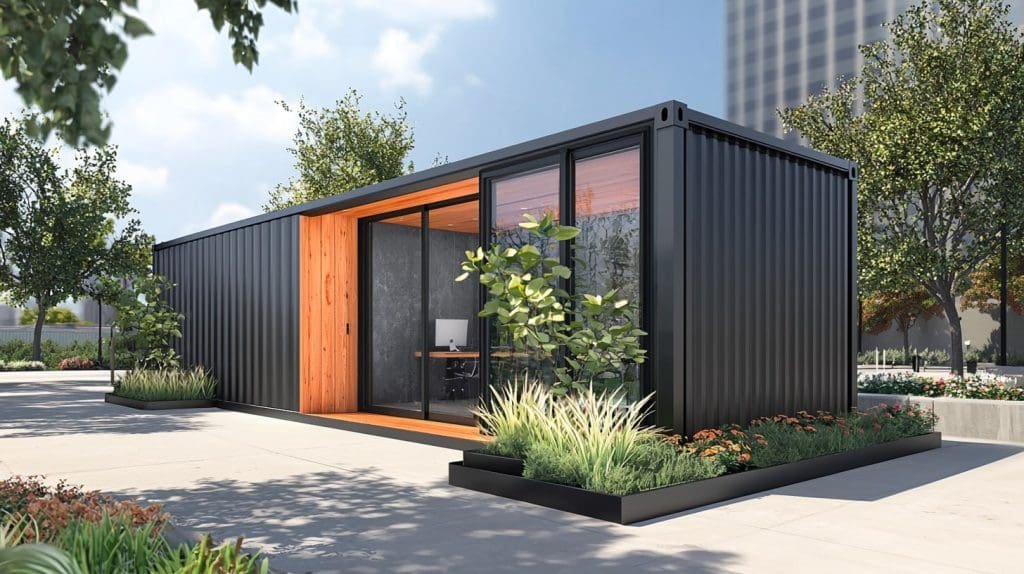
Portable small cabins are the ideal solution for individuals and businesses seeking a compact, efficient, and flexible space that can be relocated with ease. These cabins are perfect for a variety of uses, from temporary housing to mobile offices, storage units, or even vacation retreats. In this section, we will explore the diverse uses of portable small cabins and why they are becoming a popular choice for those seeking versatile, cost-effective living or working spaces.
What Are Portable Small Cabins?
Portable small cabins are compact, self-contained structures designed to be easily moved from one location to another. Typically mounted on wheels or a movable base, these cabins offer all the comforts of a traditional building, such as electricity, plumbing, and insulation, but in a compact and mobile format. Portable small cabins are particularly popular for temporary or semi-permanent use, providing flexibility for a wide range of applications.
- Compact Design: These cabins maximize the use of limited space, offering just enough room for essential living or working functions. With efficient floor plans and creative design solutions, portable small cabins ensure that every inch of space is utilized effectively.
- Ease of Relocation: Unlike traditional buildings, portable small cabins can be easily relocated to different sites. This makes them an ideal solution for people who need flexibility in terms of location or who plan to move frequently.
Benefits of Portable Small Cabins
There are numerous advantages to choosing portable small cabins for both residential and commercial use. Here are the primary benefits of these compact, flexible structures:
1. Affordability
Portable small cabins are generally more affordable than traditional homes or offices. The smaller size and simpler construction process lead to lower costs, both in terms of materials and labor. Additionally, portable cabins require fewer resources and can be built quickly, further reducing their overall cost.
- Lower Initial Costs: The cost to purchase and install a portable small cabin is typically much lower than building a permanent structure. This makes them an attractive option for individuals or businesses with a tight budget.
- Reduced Maintenance: Because they are smaller and simpler than traditional buildings, portable small cabins also require less maintenance. The compact design makes it easier to clean and maintain the interior, and the materials used are often designed for durability.
2. Versatility
Portable small cabins can be used for a variety of purposes, making them an incredibly versatile option. Whether you’re looking for a mobile office, a guest cabin, or a storage unit, portable small cabins can be customized to suit your specific needs.
- Temporary Housing: Portable cabins can provide an excellent solution for temporary housing, whether for workers on a construction site or for seasonal living. With the option to move the cabin to a new location, these cabins are perfect for those who need flexibility.
- Mobile Offices: Many businesses are using portable small cabins as mobile offices. These cabins can be equipped with everything needed to run a business, including electricity, internet, and office furniture, offering a quiet and efficient space to work remotely.
- Guesthouses and Rentals: Portable cabins are often used as guesthouses or rental properties, offering a simple and cost-effective way to create extra living space on your property. They can be placed in backyards, on farmland, or in scenic locations as vacation homes.
3. Energy Efficiency
Portable small cabins are generally more energy-efficient than traditional homes due to their smaller size and compact design. These cabins are easier to heat and cool, which reduces the amount of energy required to maintain a comfortable environment. Many portable cabins come with energy-saving features like double-glazed windows, insulation, and solar panels.
- Natural Insulation: Many portable small cabins are built with natural insulators like wood, which helps maintain a consistent temperature inside. This reduces the need for artificial heating and cooling, further decreasing energy consumption.
- Sustainable Features: Many portable small cabins are designed with sustainability in mind, offering energy-efficient appliances, solar panels, and other green technologies that help reduce your environmental footprint.
4. Customization
Just like larger cabins, portable small cabins can be customized to meet your specific needs. Whether you require a small studio, a compact office, or a cozy bedroom, these cabins offer a wide range of design options. Customization options can include layout changes, choice of materials, and additional features such as bathrooms, kitchens, or storage.
- Flexible Layouts: You can choose from various floor plans and designs, whether you want an open-concept layout or a multi-room cabin. Customizing your portable cabin ensures it fits your lifestyle and needs.
- Design Features: Portable small cabins can be customized with eco-friendly materials, energy-efficient appliances, and aesthetically pleasing finishes. From wood paneling to modern finishes, the design of your portable cabin can be tailored to suit your tastes.
Ideal Uses for Portable Small Cabins
Portable small cabins are ideal for a variety of different applications. Whether you need a temporary or permanent solution, these cabins can meet your needs. Here are some of the most common uses for portable small cabins:
- Vacation Homes: These cabins make excellent vacation homes, offering a comfortable and affordable place to stay without the commitment of a permanent structure. Whether placed by a lake, in the mountains, or on a beach, portable cabins provide a serene retreat.
- Office Spaces: Many entrepreneurs and businesses are opting for portable small cabins as mobile offices. These cabins offer a quiet, self-contained workspace, allowing you to operate your business from anywhere.
- Storage Units: Portable small cabins are a great way to create extra storage space on your property. Whether for personal use or to store business equipment, these cabins provide secure and weatherproof storage.
- Guest Cabins: If you need extra sleeping space for guests, portable small cabins are an excellent solution. These cabins provide privacy and comfort without the need to build a permanent guest house.
Conclusion
Portable small cabins offer a flexible, affordable, and energy-efficient solution for various living and working needs. From serving as mobile offices to temporary housing or vacation retreats, these cabins are highly versatile and customizable. Their small size ensures that they are easy to maintain and operate, while their portability makes them a practical option for those who need flexibility in where they live or work. Whether you need a guest cabin, an office space, or additional storage, portable small cabins provide the perfect solution. For more information on our cabins and how they can meet your needs, visit our About Us page.
Customization Options for Tiny Wood Cabins
One of the main advantages of tiny wood cabins is their high level of customization. Unlike traditional homes, these cabins can be designed to meet your exact preferences, from layout and materials to finishes and features. Whether you’re looking for a cozy weekend getaway or a full-time residence, customizing your tiny wood cabin allows you to create a space that is not only functional but also reflective of your personal style. In this section, we will explore the various customization options available for tiny wood cabins and how you can tailor your cabin to suit your needs.
Flexible Layout and Design
The layout of your tiny wood cabin plays a crucial role in maximizing the available space and ensuring that it meets your specific needs. Tiny wood cabins, including little log homes and tiny house log cabin styles, can be designed with a variety of layouts that make the most of every square foot.
- Open Floor Plans: Open floor plans are a popular choice for tiny wood cabins, as they make the space feel larger and more airy. This layout works well for small cabins and is ideal for those who want to create a multifunctional living area that can serve as both the living room, kitchen, and dining area.
- Separate Rooms: For those who need more defined spaces, tiny wood cabins can also be designed with separate rooms for the kitchen, bedroom, and bathroom. This can create more privacy, especially in a small cabin that may be used by multiple people.
- Loft Spaces: A loft can be added to your tiny cabin to provide extra sleeping or storage space. Lofted areas are perfect for maximizing vertical space in a small cabin and can add a cozy feel to the overall design.
Choice of Materials and Finishes
The materials and finishes used in your tiny wood cabin will significantly influence its aesthetic, durability, and functionality. From the wood type to flooring and cabinetry, there are many options to choose from to ensure your cabin meets both your design vision and practical needs.
- Wood Choices: Tiny wood cabins are typically made from a variety of wood species, each offering unique characteristics. Common choices include pine, cedar, oak, and spruce. The type of wood you choose will affect the look, feel, and longevity of your cabin. For example, cedar is known for its natural resistance to pests and rot, while pine offers a lighter, more rustic aesthetic.
- Exterior Finishes: You can choose from a variety of finishes for the exterior of your cabin, such as natural wood stains, paint, or a combination of both. A log cabin exterior finish is ideal for creating a traditional log home look, while more modern options may include a sleek, painted finish for a clean and minimalist appearance.
- Interior Finishes: Inside your tiny wood cabin, the materials you choose for flooring, walls, and ceilings can drastically alter the overall ambiance. From wood paneling to drywall, the interior finishes can create a rustic, cozy environment or a more modern and airy feel. Consider installing hardwood floors for a warm, timeless look or opt for tiles or laminate if you want a more contemporary style.
Functional Features and Amenities
When customizing your tiny wood cabin, you can choose from a variety of functional features and amenities that enhance the livability and comfort of the space. These options allow you to make your cabin suitable for your lifestyle, whether it’s a seasonal retreat or a full-time residence.
- Plumbing and Electrical Systems: Adding plumbing and electrical systems is essential if you plan to use your tiny cabin as a permanent living space. Choose energy-efficient appliances, LED lighting, and water-saving fixtures to minimize your environmental impact and keep utility costs low.
- Eco-Friendly Features: Many tiny wood cabins are designed with sustainability in mind. You can incorporate eco-friendly features such as solar panels, rainwater harvesting systems, and composting toilets to reduce your carbon footprint and live off the grid.
- Storage Solutions: Space-saving features such as built-in shelving, lofts, and under-bed storage can help keep your tiny wood cabin organized and free from clutter. Custom cabinets and multifunctional furniture are perfect for maximizing storage in small spaces.
- Heating and Cooling: Depending on the climate, you may want to add heating or cooling systems to your tiny wood cabin. Wood stoves or propane heaters are popular options for heating, while ceiling fans or air conditioning units can help cool the space in warmer months.
Aesthetic and Style Customization
Customization isn’t just about practicality—it’s also about creating a space that feels like home. The aesthetic of your tiny wood cabin can be fully tailored to your taste, from the exterior design to the interior decor. Whether you prefer a traditional log cabin look or a modern, minimalist style, the options are endless.
- Rustic or Modern: You can choose between a rustic, traditional log cabin style or a more modern, sleek look. Rustic cabins typically feature exposed wood, stone accents, and traditional wooden furniture, while modern cabins may include clean lines, minimalist decor, and neutral colors.
- Color and Lighting: The color scheme of your tiny wood cabin can influence the overall feel of the space. Soft neutrals like beige and gray create a calming, peaceful atmosphere, while bolder colors can make a statement. Lighting fixtures also play a significant role in the cabin’s aesthetic, with options ranging from vintage-style lanterns to contemporary pendant lights.
- Interior Decor: Customizing the interior decor allows you to bring your personal style into the space. Choose furniture that complements the cabin’s style—whether it’s a cozy armchair for a rustic retreat or a sleek sofa for a modern home. Add decorative touches like rugs, throw pillows, and artwork to make the space uniquely yours.
Conclusion
Customizing a tiny wood cabin allows you to create a space that perfectly suits your lifestyle and needs. From choosing the right materials and finishes to adding functional features like plumbing and electrical systems, customization ensures that your cabin is as practical as it is beautiful. Whether you’re looking for a traditional little log home or a modern portable cabin, the possibilities are endless. By making the most of the available space and incorporating your style preferences, you can create a tiny wood cabin that is uniquely yours. For more information about our customization options, visit our About Us page.
Building and Installing Your Tiny Wood Cabin

Building and installing your tiny wood cabin is an exciting step in creating your ideal living or working space. Whether you’re looking for a little log home, a portable cottage, or a custom tiny house log cabin style, the process of constructing and installing these cabins can be straightforward if you follow the right steps. This section will guide you through the key steps involved in building your tiny wood cabin, including site preparation, construction, and installation.
Site Selection and Preparation
Before beginning the construction of your tiny wood cabin, it’s essential to choose the right location and prepare the site. Site selection plays a crucial role in ensuring that your cabin is stable, functional, and comfortable for years to come.
- Location Considerations: Consider factors such as access to utilities (water, electricity, sewage), proximity to roads, and local building regulations. If you are opting for a portable small cabin that will be relocated frequently, make sure the site is accessible for transport vehicles.
- Ground Leveling: The site must be level to ensure that the cabin is stable. If the land is uneven, you may need to level it before construction begins. This process might involve grading or adding a foundation depending on your cabin’s needs.
- Foundation Options: Depending on the size and use of your cabin, you may choose to build a foundation. For small cabins, a simple gravel pad or pier foundation may be sufficient. For more permanent cabins, you might consider a concrete slab or other more substantial foundation types.
Construction Process
Once your site is ready, the construction of your tiny wood cabin can begin. This process will vary depending on whether you choose to build the cabin yourself or hire a professional builder.
- Building Your Own Cabin: If you choose to build your own tiny wood cabin, ensure you have the proper skills, tools, and materials. Most DIY tiny cabins are built with wood framing, which provides strength and durability while also being lightweight enough for portability.
- Hiring a Professional: If you’re not experienced in construction, it’s best to hire a professional builder who specializes in tiny wood cabins. They can guide you through the entire process, from design to building, ensuring that the cabin meets your specifications and adheres to safety and building codes.
Many builders offer custom tiny cabins, such as little log homes or tiny house log cabin styles, and can also provide pre-designed plans for easier construction. Whether you’re going the DIY route or working with a contractor, it’s important to select high-quality materials to ensure the durability and longevity of your cabin.
Key Stages of Cabin Construction
The construction of a tiny wood cabin involves several key stages. These stages are typically broken down as follows:
- Framing: This is the process of building the structure of the cabin, including the walls, floor, and roof frame. If you’re building a little log home, the logs will be stacked to create the exterior walls.
- Roofing: Once the structure is framed, the next step is to install the roofing materials. Roofs are often sloped to prevent water accumulation and are covered with materials like shingles or metal panels.
- Insulation and Plumbing: After the structure is complete, insulation is added to keep the cabin energy-efficient. Plumbing and electrical systems can be installed at this stage if required.
- Interior Finishes: The final stage of construction involves installing the interior finishes, such as flooring, walls, windows, and doors. Depending on your preferences, you can choose from a variety of finishes, from rustic wood to modern drywall.
Installing Your Tiny Wood Cabin
Once your tiny wood cabin is built, it’s time for installation. This involves transporting the completed cabin to the site and securing it in place.
- Transporting the Cabin: If you’ve opted for a portable small cabin, the transportation process involves moving the completed cabin to its final location. This requires a flatbed truck or other specialized vehicles, depending on the size and weight of the cabin.
- Securing the Cabin: After the cabin has been delivered, it needs to be anchored or placed on a suitable foundation. For portable cabins, it’s important to ensure that they are safely secured to prevent movement in adverse weather conditions. Permanent cabins may require anchoring to a concrete foundation for stability.
Working with Professionals for Installation
For those who prefer to avoid the complexities of transporting and installing their cabin, professional installation services are available. Many builders and manufacturers offer delivery and setup as part of their service, ensuring that your tiny wood cabin is installed safely and correctly.
Professional installers will take care of all aspects of the setup, from unloading the cabin to placing it on the prepared site. They will also ensure that the cabin is properly connected to utilities like electricity and water if necessary. Choosing professional help can save time and ensure that the cabin is set up in compliance with local regulations.
Final Touches and Customization
Once the cabin is in place, you can add the final touches to make the space feel like home. From interior furnishings to exterior landscaping, these finishing touches will enhance both the comfort and aesthetic of your tiny wood cabin.
- Interior Design: Customize the interior with furniture, lighting, and decor to match your style. Tiny wood cabins often feature space-saving designs, like fold-out furniture and built-in storage, to make the most of every square foot.
- Exterior Landscaping: Landscaping around your cabin can improve the overall curb appeal. Plant trees, flowers, or shrubs to create a welcoming environment around your cabin. If you’re placing your cabin in a scenic area, the natural surroundings can be incorporated into the design.
Conclusion
Building and installing your tiny wood cabin is a rewarding process that requires careful planning, attention to detail, and the right resources. Whether you’re constructing a simple tiny house log cabin style or a more complex little log home, this process ensures that you create a personalized living space that is both functional and beautiful. The flexibility of portable cabins allows you to enjoy the convenience of mobility while maintaining comfort and style. For more information on our cabins and installation services, visit our About Us page.
Costs and Budgeting for Tiny Wood Cabins
When considering a tiny wood cabin, one of the most important factors to think about is the cost. Tiny wood cabins, including little log homes, portable cottages, and tiny house log cabin styles, offer an affordable alternative to traditional housing, but the overall cost can vary depending on various factors. In this section, we’ll break down the costs associated with purchasing and building a tiny wood cabin, and provide tips for budgeting to help you plan for your ideal cabin.
Understanding the Costs of Tiny Wood Cabins
The cost of a tiny wood cabin is influenced by several factors, including its size, design, materials, and any additional features or customizations. While tiny wood cabins are generally more affordable than traditional homes, the total cost can still vary widely depending on the options you choose.
1. Size and Design
The size of your tiny wood cabin plays a significant role in determining its cost. Smaller cabins, like mini cabins or small log homes, tend to be more affordable, while larger models, or those with multiple rooms, will increase the overall cost. The design of the cabin also affects pricing; for example, a traditional tiny house log cabin style may be more expensive due to the complexity of log construction compared to a simpler, modern portable cabin design.
- Smaller Cabins: A small cabin with basic features will typically cost less, especially if it’s built from standard materials with fewer customizations.
- Larger or Custom Cabins: Larger cabins or those with custom features, such as multi-room layouts, extra insulation, or luxury finishes, will cost more to build or purchase.
2. Materials and Construction
The materials used in constructing your tiny wood cabin will significantly affect its price. Wood is a popular choice for tiny cabins, but the type of wood (e.g., pine, cedar, oak) and the finish you choose can vary in cost. Additionally, if you opt for eco-friendly materials or energy-efficient upgrades like solar panels, this will increase the price.
- Wood Type: Higher-quality wood, such as cedar or redwood, tends to cost more but offers greater durability and aesthetic appeal. Cedar, for example, is known for its resistance to pests and weathering.
- Exterior and Interior Finishes: The exterior finish, whether it’s natural wood, composite panels, or painted surfaces, can also impact the price. For interiors, high-end flooring, custom cabinetry, and luxury bathroom fixtures will add to the cost.
3. Foundation and Site Preparation
For more permanent tiny wood cabins, you may need to invest in a foundation, which can be a significant portion of the overall cost. Foundations vary from simple gravel pads or piers to full concrete slabs. The type of foundation you choose will depend on the site, the size of the cabin, and local building codes.
- Gravel Pads or Piers: These are the most affordable foundation options and are commonly used for portable small cabins or mobile cottages.
- Concrete Slabs: A concrete foundation is more expensive but offers greater stability and durability for larger cabins or those that will be used as permanent residences.
Average Costs of Tiny Wood Cabins
While the cost of a tiny wood cabin can vary widely, here is an average breakdown to help you estimate what to expect:
1. Small Portable Cabins
For small portable cabins, you can expect to pay anywhere from ₹2,00,000 to ₹6,00,000. These cabins are typically between 100-200 square feet and may come with basic features, such as a simple floor plan and minimal insulation. If you opt for a tiny log cabin or a more rugged design, the price may increase.
- Basic Models: ₹2,00,000 to ₹3,00,000.
- Custom or Upgraded Models: ₹4,00,000 to ₹6,00,000.
2. Medium-Sized Log Homes
Medium-sized tiny wood cabins, such as a little log home or a larger portable cottage, typically range between ₹6,00,000 and ₹12,00,000. These cabins can have multiple rooms and better insulation, making them suitable for year-round living or as vacation homes.
- Standard Models: ₹6,00,000 to ₹8,00,000.
- Premium or Custom Models: ₹9,00,000 to ₹12,00,000.
3. Larger Tiny Wood Cabins
Larger tiny wood cabins, designed for full-time living, tend to be the most expensive option. These cabins may include more complex layouts, additional rooms, and higher-end finishes. The price for larger tiny cabins typically ranges from ₹12,00,000 to ₹20,00,000, depending on the size and features.
- Standard Larger Cabins: ₹12,00,000 to ₹15,00,000.
- Custom or Luxury Models: ₹16,00,000 to ₹20,00,000.
Additional Costs to Consider
In addition to the base cost of the cabin, there are several other expenses you should factor in when budgeting for a tiny wood cabin:
- Transportation and Delivery: If you’re purchasing a portable cabin that needs to be delivered to your site, you may incur additional transportation costs. These can range from ₹10,000 to ₹50,000, depending on the size of the cabin and the distance from the manufacturer.
- Site Preparation: Depending on the condition of your land, you may need to clear the site, level the ground, or build a foundation. This can add anywhere from ₹10,000 to ₹50,000 or more, depending on the complexity of the site.
- Utility Hookups: If your tiny wood cabin requires plumbing, electricity, or a septic system, these installations will add to the cost. Plumbing and electrical work can range from ₹20,000 to ₹1,00,000, depending on the scope of the project.
- Permits and Fees: Check with your local authorities to see if any permits are required for the installation of your tiny cabin. These fees vary by location and can range from ₹5,000 to ₹30,000.
Budgeting Tips for Tiny Wood Cabins
When planning your budget for a tiny wood cabin, it’s important to account for all costs, including construction, transportation, site preparation, and permits. Here are some budgeting tips to help you stay on track:
- Get Multiple Quotes: It’s a good idea to request quotes from different suppliers or contractors to compare prices and find the best deal.
- Prioritize Needs vs. Wants: While it’s tempting to add extra features like custom furniture or high-end appliances, focus on the essentials first. If necessary, you can always upgrade later.
- Plan for Unexpected Costs: Always include a buffer in your budget for unexpected expenses, such as unforeseen site preparation costs or construction delays.
Conclusion
Tiny wood cabins are an affordable and practical housing solution, but it’s important to budget carefully to ensure that you can meet all costs associated with building and installing your cabin. From small, basic cabins to larger, more luxurious options, there are plenty of choices to suit your needs and budget. Whether you’re interested in a portable small cabin for temporary use or a more permanent little log home, taking the time to plan your budget will help you make the best decision for your lifestyle. For more information on how we can assist with your cabin project, visit our About Us page.
 Container Cafe
Container Cafe

